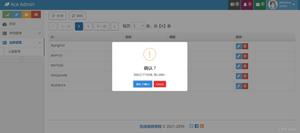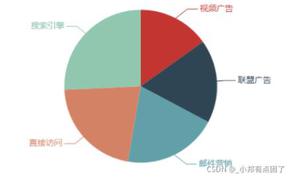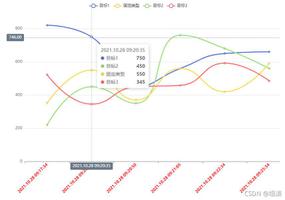echarts的使用——vue

在vue的项目开发中,数据的可视化可以用echarts来实现,具体用法如下:
(1)安装echarts,进入项目目录,执行如下命令,安装echarts:
npm install echarts
(2)引入echarts,并对相关的横坐标和纵坐标进行赋值,该实例直接写入了app.vue中,具体代码如下:
<template><div>
<h2><button ></button></h2>
<ECharts class="chart-instance" :options="options" autoResize></ECharts>
</div>
</template>
<script>
import ECharts from 'vue-echarts/components/ECharts.vue'
import 'echarts/lib/chart/line'
import 'echarts/lib/component/dataZoom'
import 'echarts/lib/component/toolbox'
import 'echarts/lib/component/tooltip'
import 'echarts/lib/component/legend'
import 'echarts/lib/component/title'
export default {
name: 'Readme',
components: {
ECharts
},
data () {
return {
// 切换标识
btnText: '隐藏',
options: {
title: {
show: false,
text: ''
},
tooltip: {
trigger: 'axis'
},
legend: {
selected: {},
data: []
},
grid: {
left: '3%',
right: '4%',
bottom: '3%',
containLabel: true
},
toolbox: {
show: true,
feature: {
dataZoom: { show: true,
title: {
dataZoom: '区域缩放',
dataZoomReset: '区域缩放后退'
}
},
mark: { show: true },
dataView: { show: true, readOnly: false },
magicType: { show: true, type: ['line'] },
restore: { show: true },
saveAsImage: { show: true }
}
},
xAxis: [
{
axisLabel: {
interval: 11
},
data: []
}
],
yAxis: [
{
type: 'value'
}
],
series: []
}
}
},
methods: {
init: function () {
let _t = this
_t.drawLine()
},
drawLine () {
let _t = this
const item = {
0: {
'上周全部点击率': 'all',
'上周默认流点击率': 'default',
'上周推荐流点击率': 'recommend'
},
1: {
'今日全部点击率': 'all',
'今日默认流点击率': 'default',
'今日推荐流点击率': 'recommend'
}
}
let url = 'http://10.23.87.10/realtimedata?_appid=recommend&data_type=week_click_rate_flow'
this.$http.jsonp(url, { //看后台获取的是什么数据类型决定是用get还是用jsonp
jsonp: '_callback'
}).then(function (response) {
let res = response.body
Object.keys(item).forEach((obj) => { // 图列
_t.options.legend.data.push.apply(_t.options.legend.data, Object.keys(item[obj]))
})
_t.options.legend.data.forEach((item) => {
_t.options.series.push({
name: item,
type: 'line',
data: []
})
})
res.result.forEach((obj, index) => { // 昨日今日展示数
obj.data.forEach((objData, objDataIndex) => {
if (!index) { // 昨天
_t.options.xAxis[0].data.push(objData.time) // 获取(横轴)xAxis.data数据
}
Object.keys(item[index]).forEach((key) => {
const selectedIndex = _t.options.legend.data.indexOf(key)
_t.options.series[selectedIndex].data.push(objData[item[index][key]])
})
})
})
}, function (res) {
alert('图表请求数据失败!')
})
},
subBtn: function () {
let _t = this
let selectd = {}
if (_t.btnText === '隐藏') { // 判断是否显示或隐藏
for (let i = 0; i < _t.options.legend.data.length; i++) {
let key = _t.options.legend.data[i]
selectd[key] = false
}
_t.btnText = '显示'
} else {
for (let i = 0; i < _t.options.legend.data.length; i++) {
let key = _t.options.legend.data[i]
selectd[key] = true
}
_t.btnText = '隐藏'
}
_t.options.legend.selected = selectd
}
},
created: function () {
let _t = this
_t.init()
}
}
</script>
<style scoped>
h2{
text-align: center;
color:#333;
padding:0;
margin:30px 0 0 0;
}
#btn{
display: inline-block;
margin-left: 10px;
color: #fff;
font-size: 15px;
background: rgba(169,51,76,.9);
border: none;
width: 65px;
height: 25px;
outline: none;
border-radius: 5px;
}
.chart-instance {
width: 100%;
height:700px;
padding-top: 10px;
text-align: left;
}
</style>
以上是 echarts的使用——vue 的全部内容, 来源链接: utcz.com/z/378571.html







